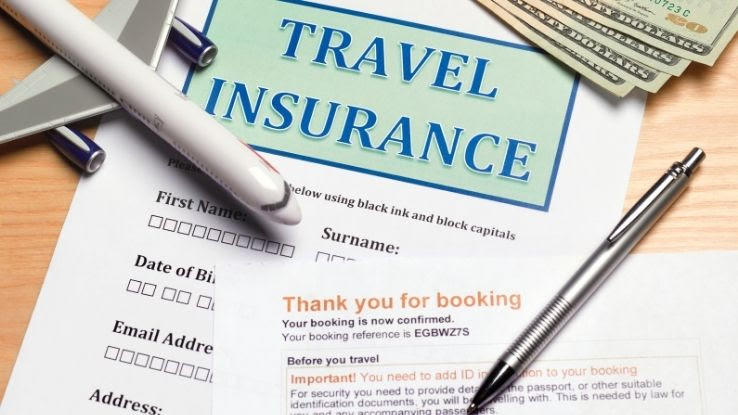Excitement About Pacific Prime
Table of ContentsGetting The Pacific Prime To WorkThe smart Trick of Pacific Prime That Nobody is DiscussingPacific Prime - TruthsNot known Factual Statements About Pacific Prime Indicators on Pacific Prime You Need To Know
This is due to the fact that the data were accumulated for a period of strong financial efficiency. Of the approximated 42 million people that were without insurance, almost about 420,000 (regarding 1 percent) were under 65 years old, the age at which most Americans become qualified for Medicare; 32 million were grownups in between ages 18 and 65, around 19 percent of all grownups in this age; and 10 million were youngsters under 18 years old, about 13.9 percent of all kids (Mills, 2000).
These estimates of the number of persons without insurance are produced from the yearly March Supplement to the Current Populace Study (CPS), conducted by the Census Bureau. Unless otherwise kept in mind, nationwide price quotes of people without health insurance policy and proportions of the population with different kinds of insurance coverage are based upon the CPS, the most commonly made use of resource of estimates of insurance coverage and uninsurance prices.
Some Known Details About Pacific Prime

Still, the CPS is particularly beneficial since it produces yearly price quotes reasonably quickly, reporting the previous year's insurance protection approximates each September, and because it is the basis for a regular collection of estimates for even more than twenty years, permitting evaluation of fads in insurance coverage gradually. For these reasons, as well as the comprehensive use of the CPS in other research studies of insurance protection that are provided in this report, we count on CPS quotes, with limitations kept in mind.

The quote of the number of without insurance people expands when a populace's insurance coverage status is tracked for numerous years. Over a three-year duration beginning early in 1993, 72 million individuals, 29 percent of the united state population, were without protection for at least one month. Within a single year (1994 ), 53 million people experienced a minimum of a month without coverage (Bennefield, 1998a)
Six out of every 10 uninsured adults are themselves utilized. Functioning does improve the likelihood that one and one's household members will certainly have insurance, it is not a guarantee. Also members of families with 2 full-time wage income earners have almost a one-in-ten possibility of being without insurance (9.1 percent uninsured price) (Hoffman and Pohl, 2000).
A Biased View of Pacific Prime
New immigrants account for a substantial proportion of individuals without medical insurance. One analysis has attributed a substantial section of the recent development in the dimension of the united state uninsured population to immigrants who showed up in the country between 1994 and 1998 (Camarota and Edwards, 2000). Recent immigrants (those who pertained to the USA within the past 4 years) do have a high price of being uninsured (46 percent), however they and their children represent simply 6 percent of those without insurance policy country wide (Holahan et al., 2001).
The relationship between medical insurance and accessibility to care is well developed, as recorded later on in this phase. Although the connection in between health and wellness insurance coverage and health and wellness results is neither direct nor easy, a considerable professional and wellness solutions study literary works web links medical insurance coverage to improved access to care, far better top quality, and enhanced personal and populace wellness standing.
Levels of analysis for analyzing the impacts of uninsurance. This discussion of health insurance coverage concentrates mostly on the united state population under age 65 because essentially all Americans 65 and older have Medicare or various other public insurance coverage. In addition, it focuses specifically on those without any type of wellness insurance coverage for any length of time.
The Basic Principles Of Pacific Prime
The troubles dealt with by the underinsured are in Recommended Site some aspects similar to those faced by the without insurance, although they are usually much less extreme. Health insurance policy, nevertheless, is neither essential nor sufficient to acquire accessibility to medical solutions. The independent and straight result of health and wellness insurance coverage on accessibility to wellness solutions is well established.
Others will get the healthcare they need even without medical insurance, by paying for it expense or seeking it from suppliers who supply treatment complimentary or at extremely subsidized prices. For still others, health and wellness insurance coverage alone does not make sure receipt of treatment due to other nonfinancial obstacles, such as an absence of healthcare service providers in their area, limited access to transportation, illiteracy, or etymological and social distinctions.
Some Known Facts About Pacific Prime.
Formal research study about without insurance populations in the United States dates to the late 1920s and very early 1930s when the Committee on the Price of Treatment generated a series of records about financing physician office check outs and hospital stays. This concern came to be salient as the numbers of medically indigent climbed during the Great Clinical depression.